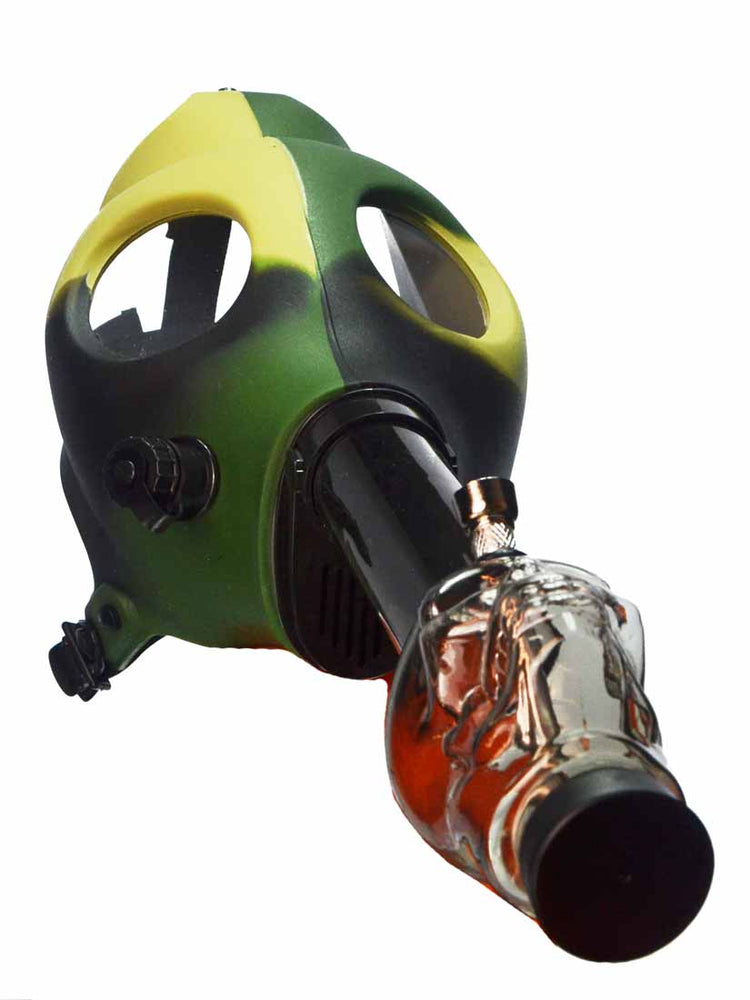

The size of the bowl is similar to that of a one-hitter, typically the width of a thumbnail or smaller. Some are straight with a "Joint" (Sandblasted top part of stem, usually about 1 inch long, and all the way around, tapered or cone shaped, so the tapered, or "cone shaped" bowl will fit in)some are bent to resemble a crane. The water pipe itself, a single-piece construct consisting of the bowl-stem, the water container, and a drawtube at least 3 inches, but some can be up to 12 inches in length.Typically, the metal version is made out of the following components: Metal utensils are typically made out of bronze or brass, the nobility version of silver and decorated with jewels. The water pipe employed since the Qing dynasty can be divided into two types: the homemade bamboo bong commonly made and used by country people, and a more elegant metal version employed by Chinese merchants, urbanites, and nobility. According to the Imperial Household Department, she was buried with at least three water pipes some of her collections can be seen in the Palace Museum. While typically employed by commoners, the water pipe is known to have been preferred by Empress Dowager Cixi over snuff bottles or other methods of intake. By the Qing Dynasty, it became the most popular method to smoke tobacco, but became less popular since the Republic era. Other sources also show evidence of the invention of the waterpipe in China during the late Ming Dynasty (16th century), along with tobacco, through Persia and the Silk Road. Abul suggested that tobacco "smoke should be first passed through a small receptacle of water so that it would be rendered harmless". ĭuring the reign of Emperor Akbar, physician Hakim Abul Fath invented the waterpipe in India, and discovered tobacco.

The kurgan was discovered when construction workers were clearing land for the construction of a power line. The word bong is an adaptation of the Thai word bong or baung ( Thai: บ้อง, ), which refers to a cylindrical wooden tube, pipe, or container cut from bamboo, and which also refers to the bong used for smoking.Įxcavations of a kurgan in Russia in 2013 revealed that Scythian tribal chiefs used gold vessels 2400 years ago to smoke cannabis and opium. A January 1971 issue of the Marijuana Review also used the term. One of the earliest recorded uses of the word in the West is in the McFarland Thai-English Dictionary, published in 1944, which describes one of the meanings of bong in the Thai language as, "a bamboo waterpipe for smoking kancha, tree, hashish, or the hemp-plant". On bongs without such a hole, the bowl and/or the stem are removed to allow air from the hole that holds the stem.īongs have been in use by the Hmong in Laos and Thailand, as well all over Africa, for centuries. To get fresh air into the bong and harvest the last remaining smoke, a hole known as the "carburetor", "carb", "choke", "bink", "rush", "shotty", "kick hole", or simply "hole", somewhere on the lower part of the bong above water level, is first kept covered during the smoking process, then opened to allow the smoke to be drawn into the respiratory system. A bong may be constructed from any air- and water-tight vessel by adding a bowl and stem apparatus (or slide) which guides air downward to below water level whence it bubbles upward ("bubbler") during use. In construction and function, a bong is similar to a hookah, except smaller and especially more portable. In the bong shown in the photo, the smoke flows from the lower port on the left to the upper port on the right. A bong with a circular carburation port in the front of the bowlĪ bong (also known as a water pipe) is a filtration device generally used for smoking cannabis, tobacco, or other herbal substances.


 0 kommentar(er)
0 kommentar(er)
